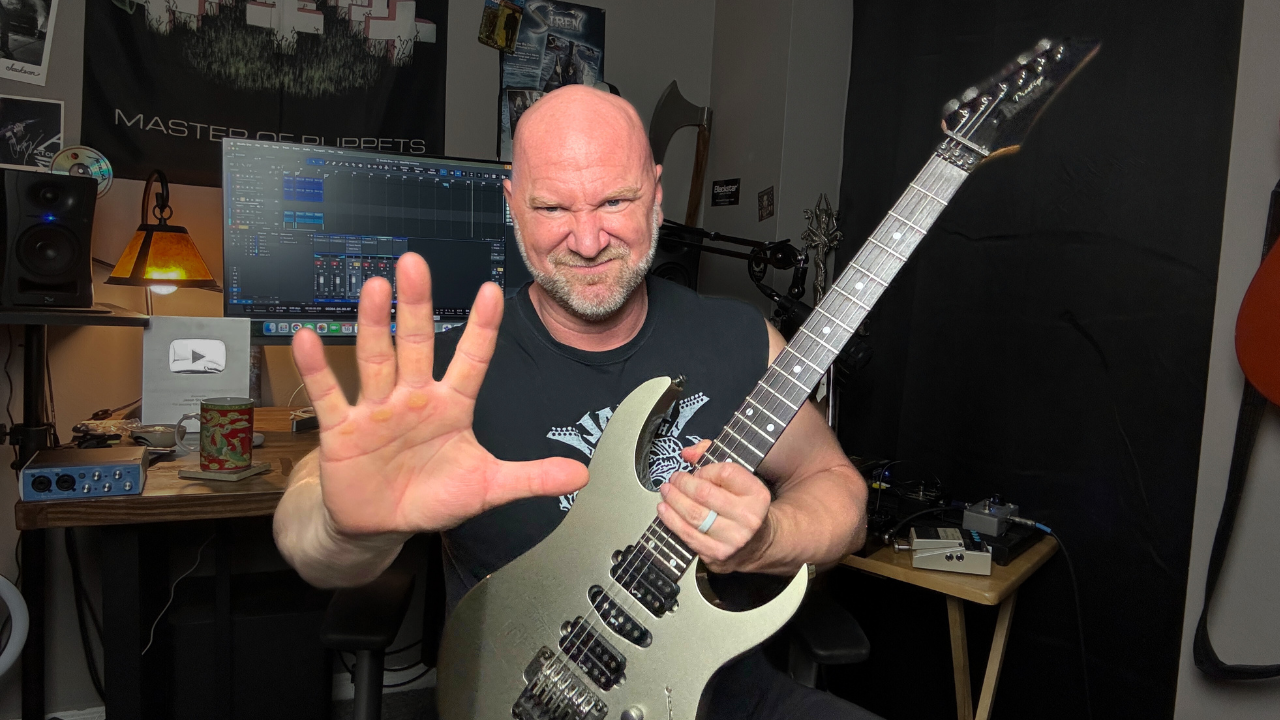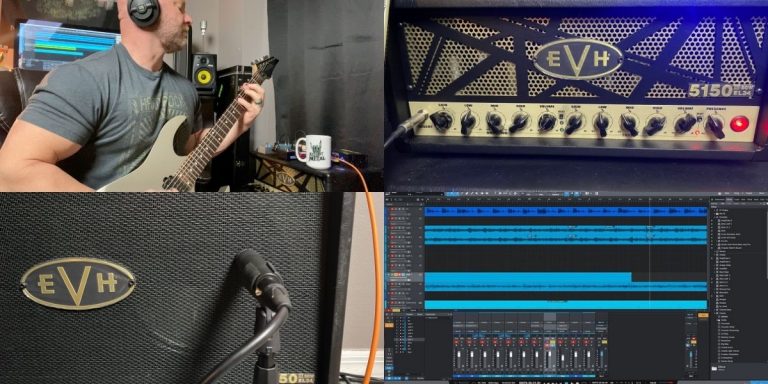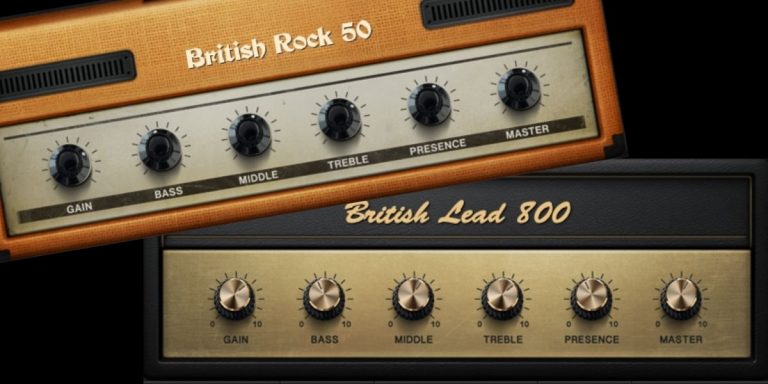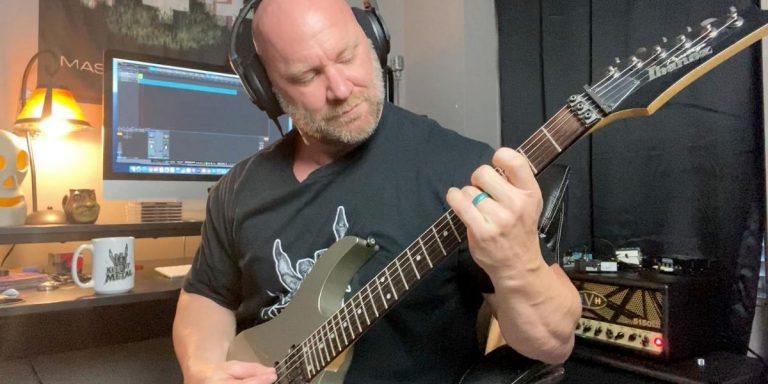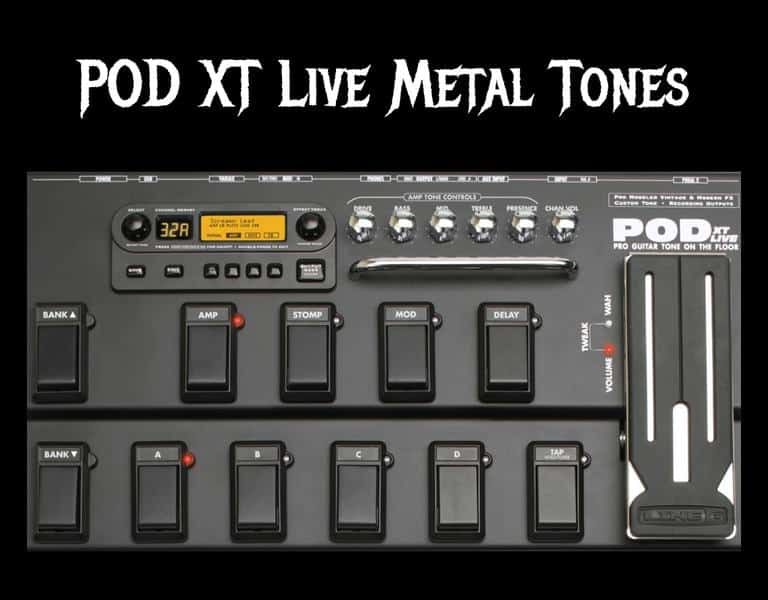5 Mistakes That Keep You From Playing Tighter Metal Guitar Riffs
If you’ve ever sat down with your guitar and thought, “Why don’t my riffs sound as tight as I want them to?” you’re not alone. Every metal guitarist hits this wall at some point, whether you’ve been playing for a few months or a few decades.
Sometimes your palm muting just isn’t right.
Sometimes everything falls apart when you try to play faster.
And sometimes the riffs you write just don’t sound as heavy or clean as you hear them in your head.
I get it. I’ve been there too, many, many times.
And after playing metal guitar since the late 80s, recording albums, and performing live for most of my life, I’ve learned that there are a handful of simple, fixable things that instantly make your metal riffs tighter, cleaner, and more professional.
In this post (and video below), I’m going to walk you through five common mistakes that hold metal guitarists back — and more importantly, how to fix each one.
These aren’t fancy tricks or over-the-top techniques.
They’re practical, real-world concepts that will help you:
- learn metal riffs faster,
- play metal riffs tighter,
- and write your own riffs with way more confidence and clarity.
Before we dive into each one, here’s a quick overview of the five mistakes:
5 Common Mistakes That Keep Your Metal Riffs From Sounding Tight
- Palm muting that’s not as tight or consistent as you want – the easiest fix that instantly tightens your tone
- Trying to play too fast, too soon – fast is cool, but clean is better
- Playing too many notes – this one concept will explode your creativity
- Not knowing when to down-pick vs alternate pick – huge for riff writing
- Never playing in front of people or jamming with others – totally underrated, game-changing for tightening your playing
We’ll dig into each one, and I’ll share some simple, practical examples (with no tabs needed) to help you overcome these and start playing tighter metal riffs today.
👇 Watch the full video below to see how each of these mistakes plays out in real time — and how to fix them so your riffs instantly sound cleaner and tighter.
❌ Mistake #1: Palm Muting That Isn’t as Tight or Consistent as You Want (The Easiest Fix for Better Metal Riffs)
Palm muting is the foundation of playing tight metal riffs and rhythms.
If your palm muting is even a little off, too loose, too tight, or in the wrong spot, your riffs can start to sound unclear, flubby, or slightly out of tune.
What’s cool is:
Palm muting is also the easiest thing to fix.
And just tightening this one area can make your metal riffs sound 10x more controlled and professional.
Two key things that determine whether your palm muting sounds tight and controlled, or loose and inconsistent, are:
1. Palm Placement
Your palm should rest right where the strings meet the bridge. That sweet spot where you’re getting a clean mute without choking the tone.
- If your palm is too far forward (toward the neck), the notes will sound like they’re being choked, and you won’t have clarity.
- If your palm is too far back (on top of the bridge but not quite over the strings), your notes will sound muffled, not muted.
You want that middle ground, the spot where everything feels punchy, tight, and controlled.
2. Palm Pressure (Tension)
This is where most metal guitarists slip up.
We tend to play with aggression. We dig in. We push hard.
But pressing too much can actually bend the strings sharp, making your notes sound out of tune.
Here’s what happens:
- Too much pressure: your palm digs in, bends the strings sharp, and creates a tight-but-ugly tone.
- Not enough pressure: the notes ring too freely, losing that tight, percussive metal sound.
The trick is finding the right balance, and it often depends on the type of riff you’re playing.
Tight vs Loose Palm Muting (Based on Your Riff Style)
Here’s the part a lot of players overlook:
You don’t use the same palm muting tension for every riff.
For fast, single-note thrash riffs:
Use slightly more pressure so notes stay tight and controlled.
Not so much that you bend the string sharp, but just enough to keep everything punchy and precise.
For slow, heavy, doom-style chugs:
Use less pressure so the notes bloom a little and carry more weight.
Let some of the sound spill over.
Those slower riffs actually sound heavier when the palm muting is a little looser.
For power chords that you want to “ring with grit”:
Back the pressure off even more.
This gives your riff that massive, wide sound while still keeping it tight in the pocket.
A Quick Mindset Shift: Tight Doesn’t Always Mean Fast
One thing I want you to remember:
Tightness has nothing to do with how fast you’re playing.
You can play slow riffs that sound super tight.
And you can play fast riffs that just don’t sit right if your palm muting isn’t locked in.
Tightness comes from:
- clean palm placement
- the right pressure
- consistent picking-hand movement
- intentional muting based on the riff style
Master that, and your riffs will immediately sound more polished, heavier, and more controlled.
Palm Muting Recap
Here are the two big things to practice:
- Placement: Keep your palm right where the strings meet the bridge
- Pressure: Use more tension for fast single-note riffs, less for big chugs or ringing chords
Dial these in, and you’ll be surprised how much tighter your riffing sounds, often instantly.
Want more help tightening your metal riffs?
If you haven’t downloaded my free Metal Riffs & Licks Practice Guide, that’s the perfect next step.
It gives you simple patterns and examples you can use right away to clean up your muting, timing, and overall riff clarity.
Before we move on, if palm muting and tight rhythm playing are areas you really want to dial in, you might also enjoy this post on How to Eliminate String Noise and Play Tighter Metal Guitar Riffs and Solos. It pairs perfectly with everything we talked about here.
❌ Mistake #2: Trying to Play Too Fast, Too Soon
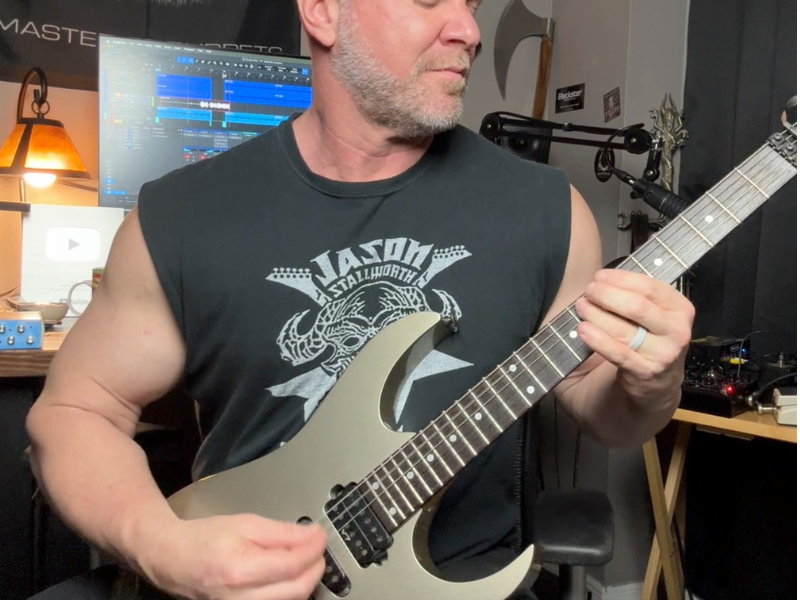
This is the mistake that makes metal riffs lose clarity: pushing speed before the foundation is solid, or chasing speed just because it feels like the “metal” thing to do.
I’m going to cover this from two perspectives:
- Learning someone else’s riff
- Writing your own riffs
Both require a slightly different mindset, so let’s break it down.
Learning Someone Else’s Riff (Megadeth, Metallica, etc.)
When you’re trying to learn a riff that’s fast, whether it’s Megadeth, Metallica, or any other band, the biggest trap is trying to match the full speed right away.
Here’s the truth:
**Speed exposes mistakes.
Slow reveals solutions.**
Instead of worrying about BPM or trying to match the song tempo immediately, start with a much simpler question:
“What are the notes?”
That’s it.
Before speed enters the picture, you need to know:
- where your fingers go,
- which notes are muted,
- which notes are open,
- and how the pattern flows.
Break the riff down into small, manageable pieces (or as I say, bite-size chunks…now you’re hungry!).
Don’t be afraid to repeat a single movement or two-note pattern over and over.
And yes, it might feel boring at first.
You may play the same small segment 20, 30, 40 times.
But that repetition is doing something powerful:
✔ You’re building muscle memory
✔ You’re internalizing the pattern
✔ You’re eliminating hesitation
✔ You’re removing the “guessing” factor
This is the key.
You cannot play fast if your mind and fingers are unsure about where to go next.
Once the notes are second nature, speed becomes a natural byproduct of confidence… not pressure.
Writing Your Own Metal Riffs (This Is Where Your Power Is)
I say this often, and I’ll keep saying it:
**If you play guitar, you’re a creator.
Your superpower is writing your own riffs.**
Learning other people’s riffs is great. It teaches you patterns, phrasing, and structure. But writing your own riffs taps into something much deeper and more personal.
This is where the speed trap really shows up.
Many guitarists think:
“I need to write fast riffs to sound impressive.”
But here’s the truth…
**Fast riffs aren’t automatically better.
Slow riffs aren’t automatically worse.**
Some riffs sound incredible, fast.
Some riffs lose all their power when you force speed on them.
Some riffs hit WAY harder when you slow them down and let the groove breathe.
So when you’re writing, be open to the process.
Maybe you start with a fast idea… but when you slow it down, it suddenly feels heavier, meaner, and more satisfying.
Maybe you try to speed something up, but it loses the feel you wanted.
Neither is right or wrong.
This is music, not a competition.
There are no rules except the ones you create.
The key is staying open:
- If the riff wants to be fast, let it be fast.
- If the riff sounds better slow, let it breathe.
- Don’t force speed into every idea.
- Don’t pressure yourself to “keep up” with anyone.
Great riffs come from instinct, not ego. Your goal isn’t to write riffs that will impress other guitar players; it’s to write riffs from the heart.
And if you’ve been feeling stuck or inconsistent in your practice overall, my 7-Day Metal Guitar Reset is a great way to rebuild your foundation and get your motivation back on track.
❌ Mistake #3: Playing Too Many Notes

It’s really easy to fall into the trap of thinking your riffs need to be packed with as many notes as possible. Metal is fast, metal is technical, metal is intense. So our brains start telling us that our riffs have to follow that rule every time.
But here’s the truth…
More notes do NOT automatically make your riffs better.
And many times, they can make your riffs feel rushed or cluttered instead of tight and heavy..
This is especially true when you’re writing your own riffs.
So let’s break this down.
The Practical Problem With “Too Many Notes”
When you cram a bunch of notes into a riff, especially one that’s meant to be fast or tight, a few things happen:
- Your picking hand starts to tense up
- Your timing becomes less consistent
- Your left hand falls behind
- You lose the groove and feel
- The riff becomes harder to memorize
- The tone becomes muddier
That’s why some of the heaviest metal riffs ever written are actually pretty simple.
The power comes from the clarity, not the quantity.
The Practical Solution: Break It Down Slow (Same as Mistake #2)
Just like trying to play too fast, too soon, the solution here is almost identical:
✔ Break the riff into small pieces
✔ Play each segment VERY slowly
✔ Get the notes into your muscle memory
✔ Remove all hesitation
✔ THEN build speed or add complexity
When you know exactly where your fingers are going, without thinking, you can choose whether to:
- speed it up
- simplify it
- add variations
- change the rhythm
- or write a second riff that complements it
But you can’t make any of those decisions if you’re guessing where the next note is.
Slowing things down gives you clarity, and clarity lets you choose the right path for the riff.
The Mindset Shift: You Don’t “Have To” Impress Anyone
Now, let’s talk about the other side of this: Your mindset.
And I say this from personal experience, because I battled this for decades…
You do NOT need to write complex riffs to impress other guitar players.
You don’t have to prove anything to anyone.
Metal culture can sometimes make us feel judged, especially online.
People can be quick to criticize, even when they don’t know the context or the intention behind the music.
And it’s really easy to let that pressure creep into your playing and your songwriting.
But this is your music.
This is your style.
You don’t owe anyone a certain level of speed or complexity.
✔ If the riff wants to be simple, let it be simple.
✔ If the riff wants to be complex, let it be complex.
✔ If it feels better slowed down, slow it down.
✔ If it feels better sped up, speed it up.
There’s no right or wrong here.
There’s no “better” or “worse.”
There’s just what feels right and what sounds good to you.
Sometimes your best riffs will come when you take the pressure off and stop trying to impress anybody, including yourself.
Practical Recap: Clarity Over Chaos
If you find yourself writing riffs with tons of notes and they just don’t feel tight, here’s what to do:
- Slow it way down
- Break it into small pieces
- Memorize the movements
- Remove the “guess factor”
- Build speed after the clarity is there
- And most importantly, write what feels right
When you give yourself creative freedom, your riffs get better naturally.
And you’ll be surprised how often less notes sound more powerful.
If these concepts are starting to click for you, you’d probably get a ton out of the Jason Stallworth Guitar Academy.
Inside the Academy, I take these ideas even further with full step-by-step courses, monthly rhythm lessons, and simple, practical exercises that help you:
- tighten your palm muting
- clean up your picking
- write your own metal riffs
- build your confidence
- and develop your own unique style as a guitarist
Everything is laid out in an easy-to-follow way — no fluff, no overwhelm, just real-world metal guitar training.
👉 You can check out the Academy here.
If you want more technique-focused lessons that build on what we’ve covered so far, you might also like my post on 5 Metal Guitar Techniques to Take Your Riffs to the Next Level.
❌ Mistake #4: Not Knowing When to Downpick vs Alternate Pick

Downpicking and alternate picking are two of the core techniques of metal guitar. Each one gives your riff a different feel, a different weight, and a different level of aggression.
There’s no rule that says you must use one over the other.
This isn’t about “right or wrong.”
But some riffs simply sound better with one technique over the other, and understanding that difference will make your riffs tighter, heavier, and more expressive.
Let’s break this down.
Why Picking Technique Matters (Even If the Notes Are the Same)
A lot of guitarists think:
“If I’m playing the same notes, does it really matter whether I downpick or alternate pick?”
And technically, you can play a riff either way and get close enough.
But here’s the thing:
Downpicking and alternate picking create different textures.
Different attack.
Different tone.
Different character.
Even if the notes don’t change, the feel absolutely does.
That’s why some riffs fall flat when you alternate pick them, and some riffs feel sluggish or unnatural when you try to downpick everything.
What Downpicking Does for Your Riffs
Downpicking gives you:
- heavier attack
- more control
- tighter low-end
- that classic Metallica-style punch
- a consistent, aggressive driving feel
When you hear a tight, chuggy riff that really hits in the chest.
There’s a good chance downpicking is doing the heavy lifting.
Some riffs demand this approach.
If you try to alternate pick those riffs, they often lose that solid, percussive feel, kind of like the riff becomes “too light.”
What Alternate Picking Does for Your Riffs
Alternate picking gives you:
- more speed
- smoother motion
- more stamina for fast passages
- better articulation at high tempos
- that thrash/melodeath fluidity
If you’re playing fast tremolo-style patterns or quick melodic runs, alternate picking is usually the way to go.
Try downpicking fast single-note lines, and you’ll feel your arm burn out pretty quickly. Also, the riff may not sound as clean or controlled.
Mixing Both Techniques in the Same Riff
A lot of metal riffs actually use both techniques.
You might downpick the heavy accents, then alternate-pick the faster sections in between.
Or you might alternate, pick a run but use a downstroke to “reset” the feel at the end of the phrase.
Galloping is a great example of this, as the gallop is a one-two-three, snappy alternate picking technique, but will often have some notes surrounding it down-picked.
Mixing the two can create:
- dynamic contrast
- heavier accents
- tighter transitions
- more interesting riff flow
- better clarity in complex patterns
This is one of the secrets of great metal rhythm playing. It’s not one technique for everything, but a combination of both where they fit best.
How This Applies When Learning Other People’s Riffs
If you’re learning a riff and it just doesn’t feel right, even though you’re hitting the correct notes, this is often the reason:
You’re using the opposite picking technique from the original player.
Once you switch to the right approach, it suddenly clicks:
- The tone changes
- The weight shifts
- The timing locks in
- The riff feels “correct”
A lot of students have told me,
“Jason, I didn’t realize he was downpicking that, that’s why my version sounded off!”
Picking direction matters more than most people realize.
How This Helps You Write Your Own Riffs
This is where things get really fun.
When you’re writing your own riffs, experiment with:
- playing a section entirely with downstrokes
- then playing the exact same thing with alternate picking
- then mixing both approaches
You’ll be shocked at how differently the riff feels in each version.
That little shift can take a riff from:
- decent to heavy
- chaotic to controlled
- stiff to smooth
- boring to exciting
Sometimes the “real” version of your riff only shows up when you choose the right picking approach.
Practical Recap: Let the Riff Decide
Here’s the mindset to keep:
- Downpicking = weight, punch, tight low-end
- Alternate picking = speed, smoothness, upper-tempo control
- Mixing both = expressive, dynamic, unique-sounding riffs
There’s no rule you have to follow. But being aware of how each technique affects the feel of a riff will help you write cleaner, heavier, more intentional metal rhythm parts.
Let the riff guide you.
Play it both ways.
Choose the one that makes it come alive.
And once your riffs are feeling tight, having a great tone behind them makes everything hit even harder. I recently reviewed the Bogren Digital Ampknob BDM, a killer amp sim for rock and metal that delivers a heavy tone with almost no tweaking.
❌ Mistake #5: Never Playing in Front of People (The Most Underrated Way to Get Tighter)
This last one might surprise you, but it’s one of the best ways to tighten up your metal riffs, and your overall playing, more than almost anything else:
Not playing in front of people.
You don’t need a full band.
You don’t need a stage setup.
You don’t even need an electric guitar with a stack behind you.
You just need to play for someone other than yourself.
And this is where so many guitarists miss out on a huge opportunity for growth.
How Playing in Front of People Makes You Tighter
There is something that happens when you play guitar with even a little outside pressure:
- Your timing sharpens
- Your picking becomes more intentional
- Your riffs become more controlled
- You listen more closely to your own playing
- You naturally “lock in” tighter than when you’re playing alone
It’s not about performing perfectly.
It’s the focus your brain shifts into when you know someone is listening.
That slight bit of adrenaline, the good kind, heightens your awareness and organically forces your playing to become cleaner.
This alone can take your metal riffing to a whole new level.
You Don’t Need a Full Band…Just People
You don’t need a full metal band to experience this. You can build this skill by:
- playing in front of a friend or family member
- jamming with another musician
- going to a local open mic
And if you have an acoustic guitar, use it.
If you have an electric and a small amp, bring it.
It’s not the gear that matters. It’s the experience.
Open Mics Are One of the Best Tools for Guitar Growth
I mentioned performing at an open mic, and I strongly believe this is the best thing you can do. I’ve hosted open mics in the Tampa area for years, and I’ve seen so many musicians walk up nervous, unsure, and shaky… and then walk off the stage with a huge smile and a massive boost in confidence.
They get addicted, come back, and get better every time.
Most of them are playing acoustic and singing, sure.
But every now and then, someone brings an electric guitar and just jams out some riffs or power chords.
And I can tell you firsthand:
It changes them. Completely.
Their timing gets tighter.
Their presence improves.
Their playing gets more controlled.
Their confidence skyrockets.
Most importantly, they’re having the time of their life!
And all of that translates directly back into:
- tighter metal riffs
- better rhythm control
- cleaner picking
- improved palm muting
- and stronger overall musicianship
There really is nothing like it.
Even My Acoustic Shows Make Me a Better Metal Guitarist
Most people know me for metal, but I also play live solo acoustic shows around town, mainly 80s covers with just me singing and playing acoustic guitar.
It might not be metal, but guess what?
It still makes my metal playing tighter.
Why?
Because the skill of performing:
- playing in time
- staying calm under pressure
- engaging with an audience
- keeping your hands relaxed
- locking into a rhythm
- and I must mention, singing and playing at the same time (yes, you CAN do this, too!)
…all of that carries over into metal guitar beautifully.
Playing live, in any form, builds a skill set you can’t get by sitting alone in your room.
The Other Huge Benefit: Community
Going to open mics or jamming with others also connects you to:
- other guitar players
- local musicians
- drummers
- bassists
- singers
- people who will inspire you
- people you can learn from
- people who might even form a future band with you
That experience is priceless.
Practical Recap: Why You Should Play for Others
If you want to get tighter, more controlled, and more confident with your riffs, here’s why playing in front of people is so powerful:
- You focus more
- Your timing improves
- You become more consistent
- Your technique tightens naturally
- You push yourself without forcing it
- You tap into the true “musician” side of yourself
And the best part?
You don’t need a stage.
You don’t need a band.
You just need another human being willing to listen — even for 30 seconds.
🎯 Final Recap: 5 Mistakes That Keep Your Metal Riffs From Sounding Tight (And How to Fix Them)
If you can eliminate these five mistakes, you’re going to notice a massive improvement in both how tight your riffs sound and how confident you feel as a metal guitarist. Here’s a quick recap:
1. Palm Muting That’s Not as Tight as You Want
Keep your palm right where the strings meet the bridge and use the right amount of pressure. More pressure for fast single-note riffs, less pressure for big, heavy chugs.
2. Playing Too Fast, Too Soon
Slow down and memorize the notes first. Once the movements are locked into muscle memory, speed happens naturally — and cleanly.
3. Playing Too Many Notes
Cramming in more notes isn’t always better. Don’t pressure yourself to write complex riffs every time. Simplify first, build clarity, then add speed or complexity if the riff actually calls for it.
4. Not Knowing When to Downpick vs Alternate Pick
Each technique brings a different feel. Downpicking = weight and punch. Alternate picking = speed and fluidity. Try your riffs both ways and choose the approach that brings the riff to life.
5. Never Playing in Front of People
Whether it’s friends, family, a jam partner, or a local open mic — playing for others sharpens your timing, tightens your technique, and develops a skill set you simply can’t get on your own.
🎸 Ready to Take Your Metal Rhythm Playing Even Further?

If you don’t already have my free Metal Riffs & Licks Practice Guide, definitely grab it.
It’s designed to help you tighten up your riffs with simple patterns, examples, and practice concepts you can start using today.
And if guides and lessons like this help you, then I’d love to invite you to the
Jason Stallworth Guitar Academy.
It’s where I go deeper with structured courses, monthly lessons, tabs, tracks, and a clear roadmap to help you build your skills and confidence as a metal guitarist.
Whether you’re working on tightening your rhythm, writing your own riffs, or stepping into lead guitar, you’ll have everything you need all in one place.
Keep it Metal,
Jason

